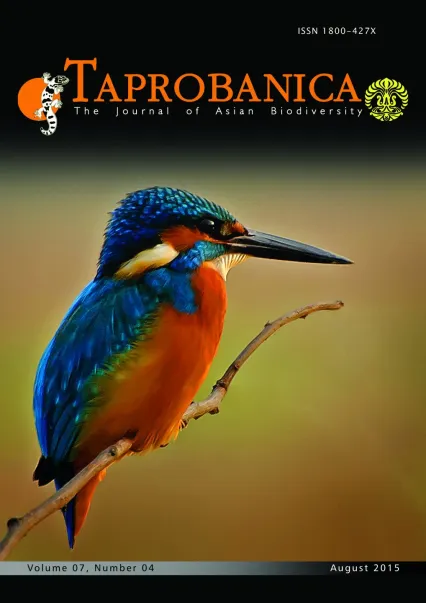

v7i4.194
Volume 7 | Number 4 | November 2015
Major Article
ISSN: 1800-427X (print)
eISSN: 1800-427X (online)
DOI:10.47605/tapro.v7i4.194
Submitted date: 31 December 2014
Accepted date: 27 July 2015
Published date: 15 August 2015
Pp. 224–234.
AN INVERTEBRATE PERSPECTIVE TO HUTCHINSON’S RATIO USING CO-OCCURRING TIGER BEETLE (COLEOPTERA: CICINDELIDAE) ASSEMBLAGES
Chandima Deepani Dangalle* & Nirmalie Pallewatta
*Corresponding author. E-mail: cddangalle@gmail.com
Abstract
Tiger beetles co-occur for cryptic advantage, interspecific hybridization, reproductive synchrony and thermoregulation. Successful co-occurrence relies on the absence of competition and Hutchinson (1959) has proposed body size ratios for co-occurrence of bird and mammal taxa. The present study calculates body size ratios for co-occurring tiger beetle assemblages and investigates similarities with ratios for co-occurring birds and mammals. Ratios obtained using measurements of different morphological characters are considered and compared. Association of body size ratios of co-occurring tiger beetles with habitat type and number of species in co-occurring tiger beetle assemblage are determined. The study revealed a body weight ratio and body length ratio for co-occurring tiger beetles that was similar to Hutchinson’s ratios for birds and mammals. Different ratios were obtained when using different morphological parameters. Body size ratios inferred using mandible lengths differed significantly according to habitat type. Further, relatively higher values were observed for assemblages occupying terrestrial habitats while lower values were found for assemblages of aquatic habitats.
Key words : body size, competition, morphology, habitat type, Sri Lanka
Section Editor: Jörg Gebert
eISSN: 1800-427X (online)
DOI:10.47605/tapro.v7i4.194
Submitted date: 31 December 2014
Accepted date: 27 July 2015
Published date: 15 August 2015
Pp. 224–234.
AN INVERTEBRATE PERSPECTIVE TO HUTCHINSON’S RATIO USING CO-OCCURRING TIGER BEETLE (COLEOPTERA: CICINDELIDAE) ASSEMBLAGES
Chandima Deepani Dangalle* & Nirmalie Pallewatta
*Corresponding author. E-mail: cddangalle@gmail.com
Abstract
Tiger beetles co-occur for cryptic advantage, interspecific hybridization, reproductive synchrony and thermoregulation. Successful co-occurrence relies on the absence of competition and Hutchinson (1959) has proposed body size ratios for co-occurrence of bird and mammal taxa. The present study calculates body size ratios for co-occurring tiger beetle assemblages and investigates similarities with ratios for co-occurring birds and mammals. Ratios obtained using measurements of different morphological characters are considered and compared. Association of body size ratios of co-occurring tiger beetles with habitat type and number of species in co-occurring tiger beetle assemblage are determined. The study revealed a body weight ratio and body length ratio for co-occurring tiger beetles that was similar to Hutchinson’s ratios for birds and mammals. Different ratios were obtained when using different morphological parameters. Body size ratios inferred using mandible lengths differed significantly according to habitat type. Further, relatively higher values were observed for assemblages occupying terrestrial habitats while lower values were found for assemblages of aquatic habitats.
Key words : body size, competition, morphology, habitat type, Sri Lanka
Section Editor: Jörg Gebert
- List of Articles & Contents





